The transfer saga surrounding Declan Rice finally concluded this summer, with the highly-rated defensive midfielder switching West Ham for Arsenal in a deal believed to be worth £105m. The Hammers may be disappointed to lose such an influential player, but it was inevitable, and they have proven their preparation for such inevitability by bringing in a replacement who many believe to be a solid addition to David Moyes’ side. Edson Álvarez was West Ham’s selected midfielder, with the Mexico international leaving Eredivisie giants Ajax for a reported £35.4m.
If you are an Eredivisie fan, then you will be fully aware of Álvarez’s talents and his role in the Ajax team in recent years — Hammers fans will be hoping he can transition into Premier League life easily and replicate his Ajax form. This scout report, in the form of a tactical analysis, will go beyond simply highlighting Álvarez’s talents in and out of possession — the analysis will link those elements to how he can suit West Ham’s tactics the way Rice did. The analysis will also compare data between the two midfielders based on their performances in their respective league competitions during the 2022/23 campaign.
Álvarez at Ajax – Overview
While we could provide an in-depth scout report that looks at Álvarez’s style of play, various attributes, strengths and weaknesses in great detail, the purpose of this article was to investigate why and how West Ham selected Álvarez to replace Rice before comparing the two in several key areas.
However, if you are craving that in-depth scout report on Álvarez, our very own Mak Pakhei provided just that back in 2021, which you can read here. Of course, his game will have developed in those two years as he has gone from strength to strength in an impressive time frame, but in general, his play style and what he offers West Ham is the same blueprint.
To summarise, Álvarez is a defensive midfielder, holding strong qualities of an anchor in midfield, but he also brings an element of versatility as he can play as a centre back too. The Mexico international has been instrumental in Ajax’s domestic and European adventures in recent years. While they’ll likely use their excellent recruitment and development strategies to fill the void, they will undoubtedly miss Álvarez.
In losing Rice, West Ham didn’t just lose a fantastic midfielder but also a leader who wears his heart on his sleeve and communicates very well with his teammates. The good news is that Álvarez offers remarkably similar traits in this area, so Hammers fans will hope he can have a similar impact in the Premier League as he did in the Netherlands.
In terms of technical ability, Hammers fans should be confident and excited about the arrival of Álvarez, as he was part of an Erik Ten Hag Ajax team that was highly fluid in possession, which required good mental attributes, yes, but also high competence on the ball too. Additionally, he offers outstanding off-the-ball movement and supporting positions, particularly in the early possession phases, which will allow West Ham to get out of defence and into advanced midfield positions quickly.
Selecting Álvarez — data analysis & alternative options
West Ham did well to seal the signature of Álvarez, who was catching the eye of several clubs across Europe, but why did the Hammers opt for the former Ajax man over anyone else? Well, in this section, we will provide data analysis as we look to understand West Ham’s thoughts throughout this process, as well as identify who else they could have looked at/could look at had they missed out on Álvarez/if he leaves for a bigger club sooner than expected.
The players involved in the following analysis were identified using TFA’s player similarity tool xGold, which provided us with a list of names that meet the following criteria:
- Played as a DM/RDM/LDM in the 2022/23 season for their club.
- Played their club football in one of the following leagues — EFL Championship, La Liga, Ligue 1, Bundesliga, Serie A, Eredivisie, Scottish Premier League, Belgian Pro League, or Portuguese Primeira Liga.
- Has a market value of less than €50m
- Is aged 28 or under
To add context to the data analysis, Declan Rice and Edson Álvarez have been included among the other potential targets. The leagues have been selected as we view them as realistic markets for West Ham to explore for such an essential part of their team, but the Premier League was left out of our data analysis as it was always unlikely that the Hammers find a Rice replacement in the same league, mainly due to the player price inflation.
We will go through several key areas, spanning from defensive metrics to assessing the players in more attacking areas to see how they contribute to possession. The analysis also includes players who have moved clubs this summer — they have been included as West Ham could still have considered them before any transfer.
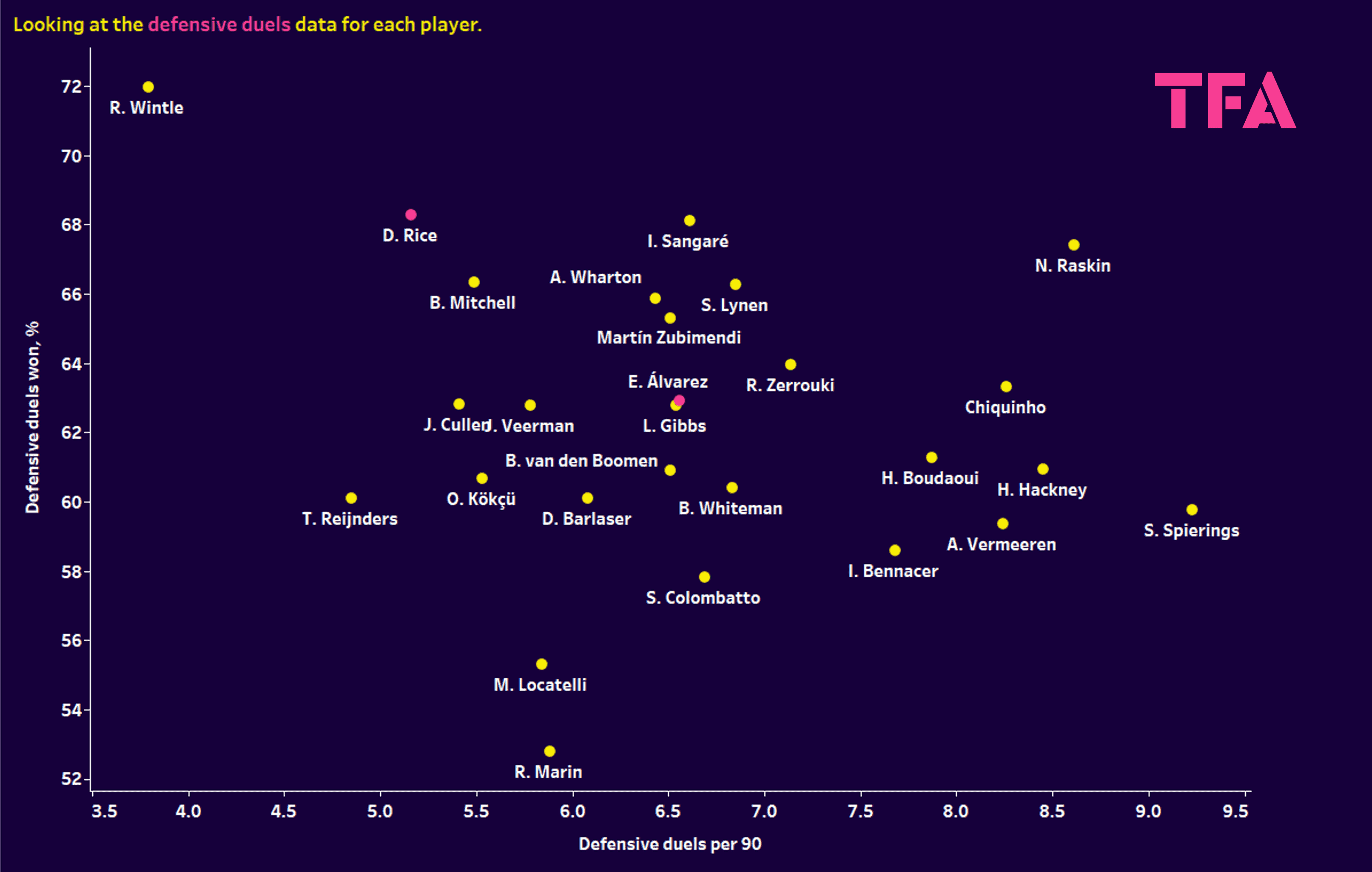
We kick things off by looking at some defensive data for obvious reasons. What was crucial for David Moyes and West Ham was to find a player who offers something both in and out of possession and a strong mentality. As the first graph above tells us, Rice didn’t get involved in many defensive duels last season but was often successful when doing so — the same can be said of Cardiff City midfielder Ryan Wintle. Álvarez offered a slightly higher attempt average than Rice, but his success rate of 62.93% is somewhat lower, sitting around the average mark of the group.
Nicolas Raskin, a Belgian midfielder recently joining SPL side Rangers, offered a solid defensive presence last season for Standard Liége. The 22-year-old averaged a high number of attempted duels but also offered a high success rate of 67.4%.
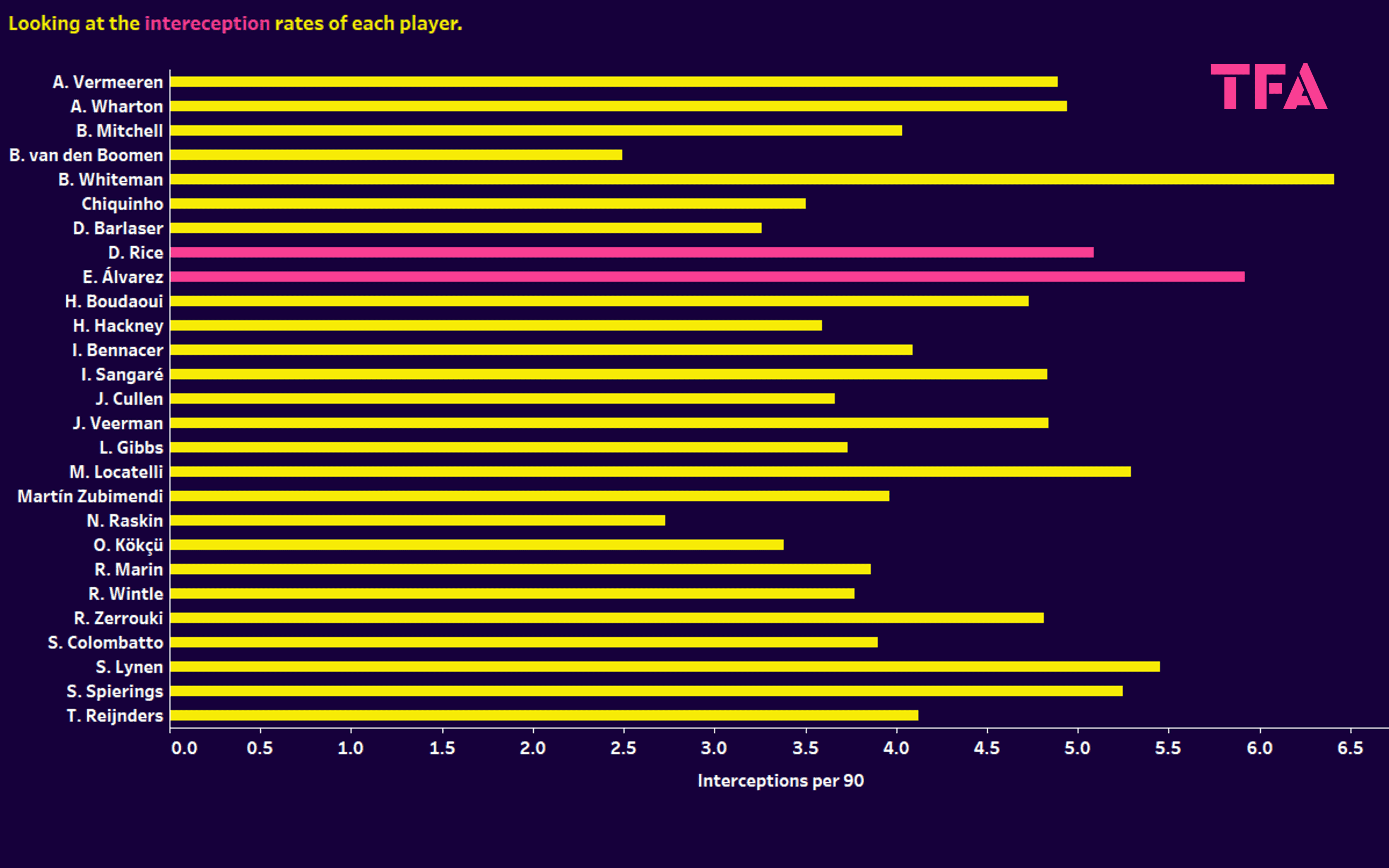
Moving on to interceptions, we better understand why West Ham chose Álvarez. As we covered earlier, Rice doesn’t offer an exceptionally high average in defensive duel attempts; his best defensive contribution comes in breaking up opposition play via interceptions.
The England international provided one of the higher averages of the group last season, contributing 5.09 interceptions per 90 minutes. Álvarez offers the second-highest register of the group thanks to his impressive 5.92 interceptions per 90, highlighting his awareness and ability to read the game.
Preston North End midfielder Ben Whiteman is one of the best options in the EFL regarding reading situations and intercepting. The former Doncaster Rovers man averaged an incredible 6.41 interceptions per 90 last season, which is likely part of the reason his name has been linked with a few clubs over the last year or so — it may be a matter of time before we see him in the Premier League.
Other players who offered good numbers in this area last season include Adam Wharton (Blackburn Rovers), Manuel Locatelli (Juventus), Senne Lynen (Werder Bremen), and Stijn Spierings (Lens).
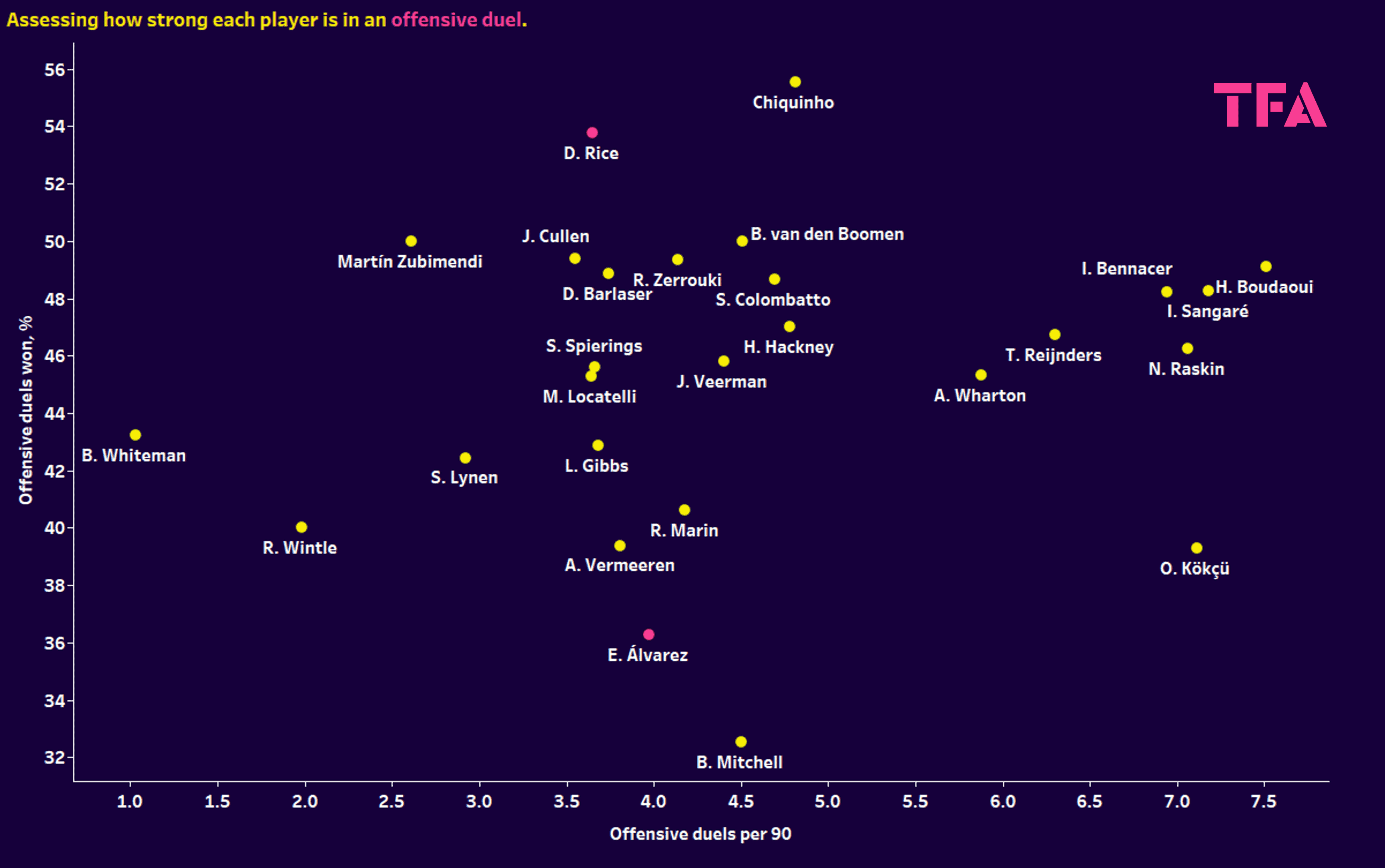
Moving onto in-possession metrics now, it is vital to consider Rice’s role in possession for West Ham. The Hammers needed him to move the ball quickly and sufficiently but also be confident and able to carry the ball through midfield in certain moments. Indeed, passing will be analysed, but we are also interested in how these players performed in dribbling and protecting the ball.
Looking at offensive duels, we can see above just how good Rice is on the ball; how strong he is in possession. Again, he doesn’t offer many offensive duels per 90, but his success rate of 53.79% is miles ahead of the rest of the group — apart from Benfica player Chiquinho, who offers a higher success rate and a higher attempt average.
In terms of Álvarez and his contribution in this area, he offers a similar attempt average to his predecessor Rice, but his success rate is significantly lower, suggesting a weak spot in his game.
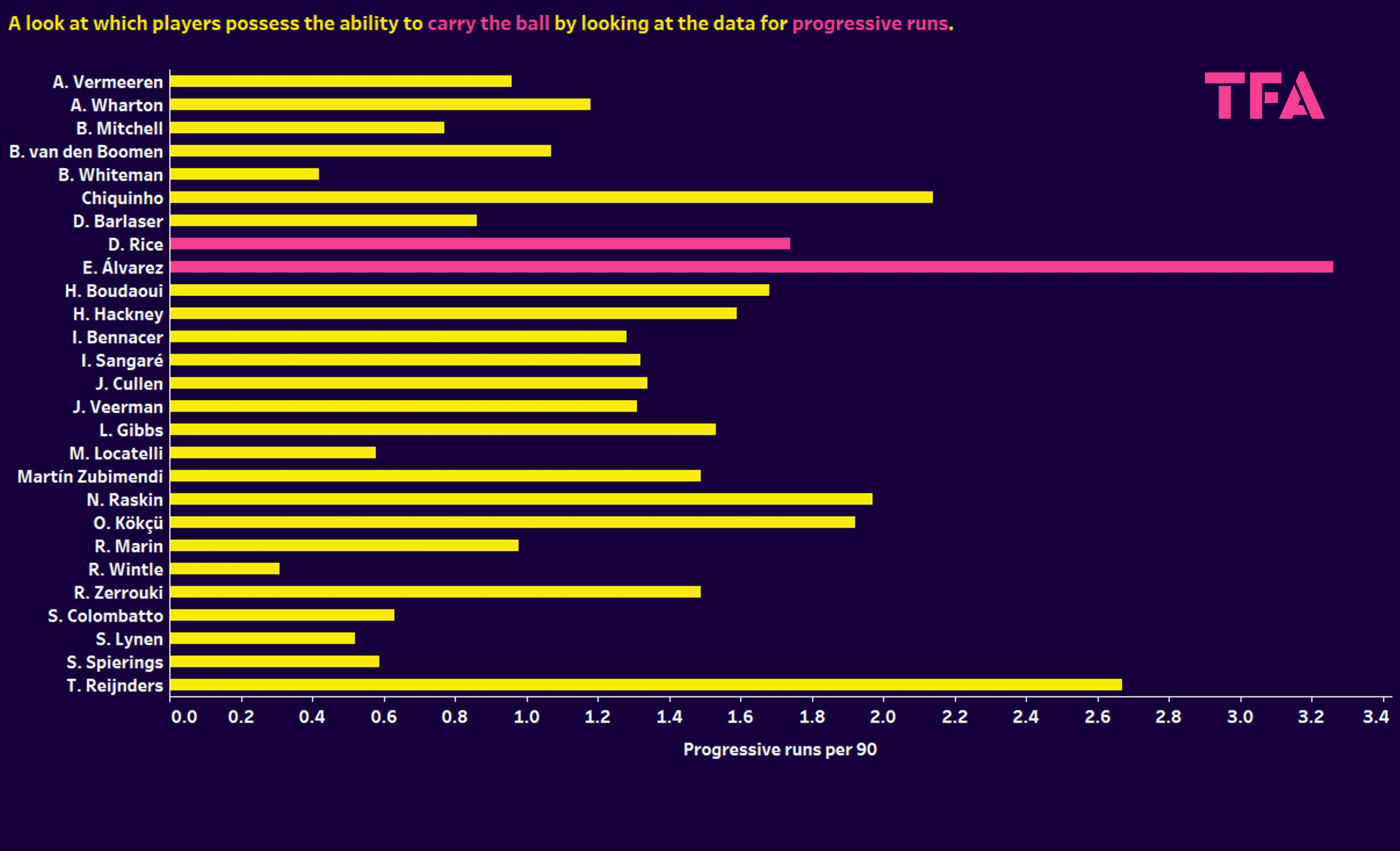
We now look closer at each player’s ability on the ball, building on the previous graph. While Álvarez had a low success rate for offensive duels, this graph shows that he has an apparent talent for carrying the ball, as he offered more progressive runs than anyone else in the group last season, averaging 3.26 per 90.
It will be interesting to see if Moyes looks to limit this part of Álvarez’s game as bursting forward too often could leave West Ham’s midfield exposed, but the data tells the story of Álvarez having the ability as a ball carrier.
Rice does offer one of the higher averages of the group. Still, players like Chiquinho, Raskin, Orkun Kökçü (Benfica, recently joined from Feyenoord), and Tijjani Reijnders (Milan) all posted a higher average of progressive runs than the Arsenal man last season.
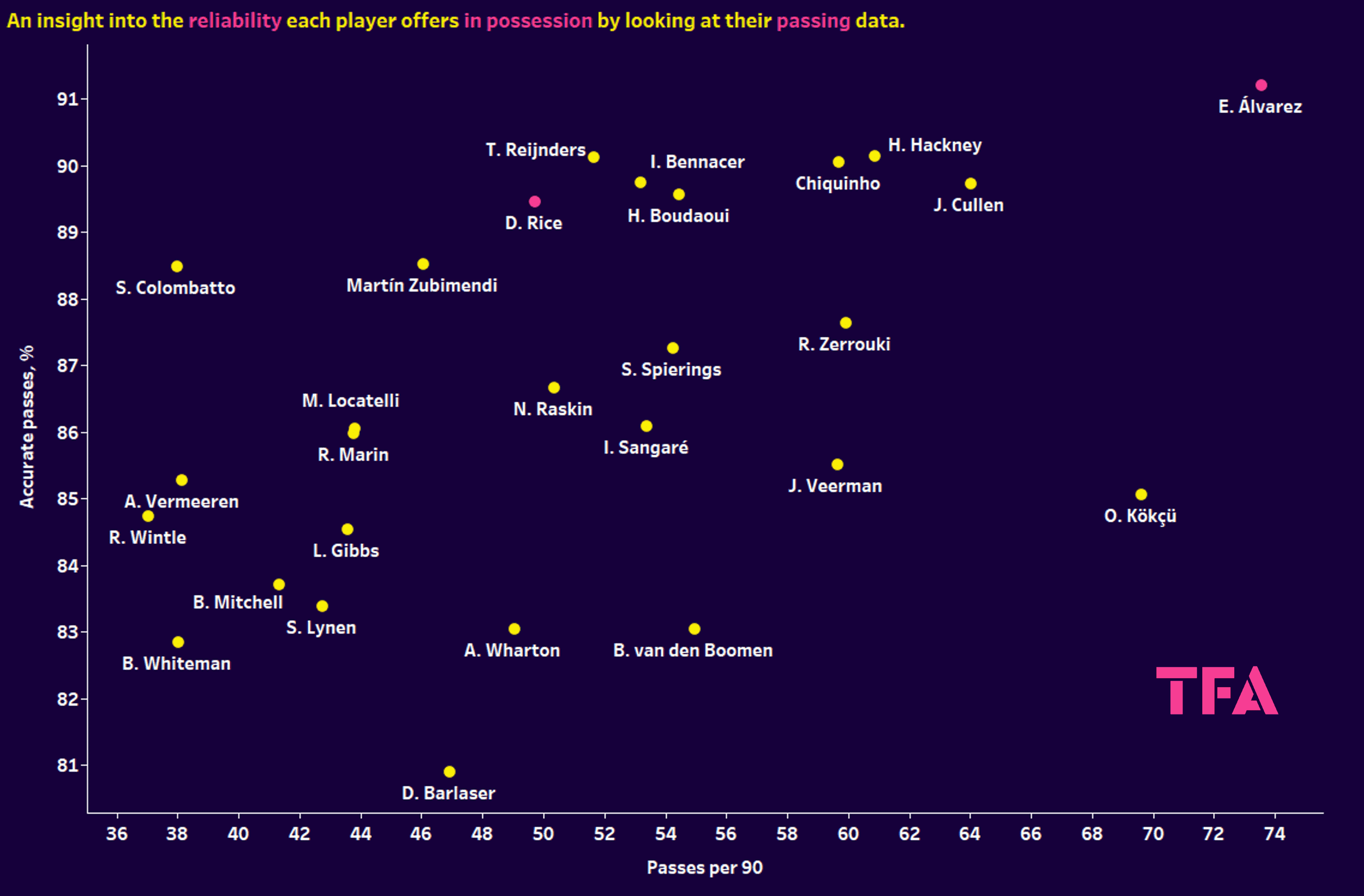
Being reliable regarding passing is paramount for a midfielder at any level, especially in the Premier League. While we will analyse other passing areas later in the article, we start with overall passing just to understand which players could excel.
Immediately, likely to the excitement of Hammers fans, Álvarez stands out thanks to his passes per 90 average and passing accuracy, which are higher than anyone else’s data from last season (within this group). This suggests that he is capable on the ball, able to retain/recycle possession and potentially move the ball forward too.
Compared to Rice, the Englishman offers substantial passing accuracy but significantly fewer pass attempts. However, it is important to remember that this is likely a tactical influence from David Moyes.
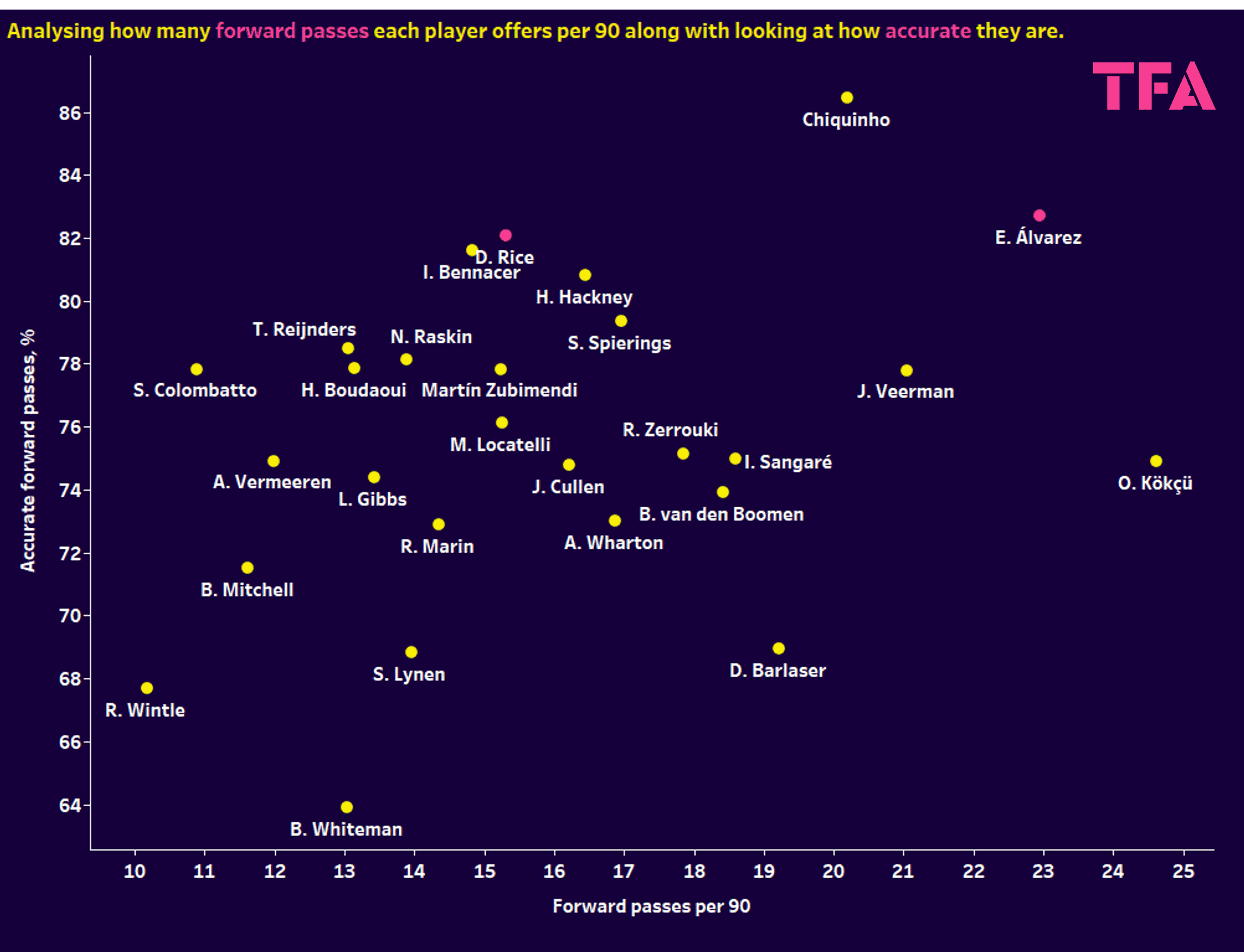
Chiquinho’s name continues to crop up in a positive light, and he does so again in this graph — he has been at the top end of several charts now. The Benfica man is 28 currently, so a big move to another European league may be fleeting, but there may still be a team looking for a reliable in-possession player for the next three-four years.
Álvarez also shines again in forward passing, offering a high attempt average and an impressive accuracy rating of 82.71%, second in the group only to, you guessed it, Chiquinho. This will give West Ham fans immense encouragement, as being reliable when passing forward was a big part of Rice’s game. While he offered fewer attempts, his accuracy rating indicated an actual ability in this area.
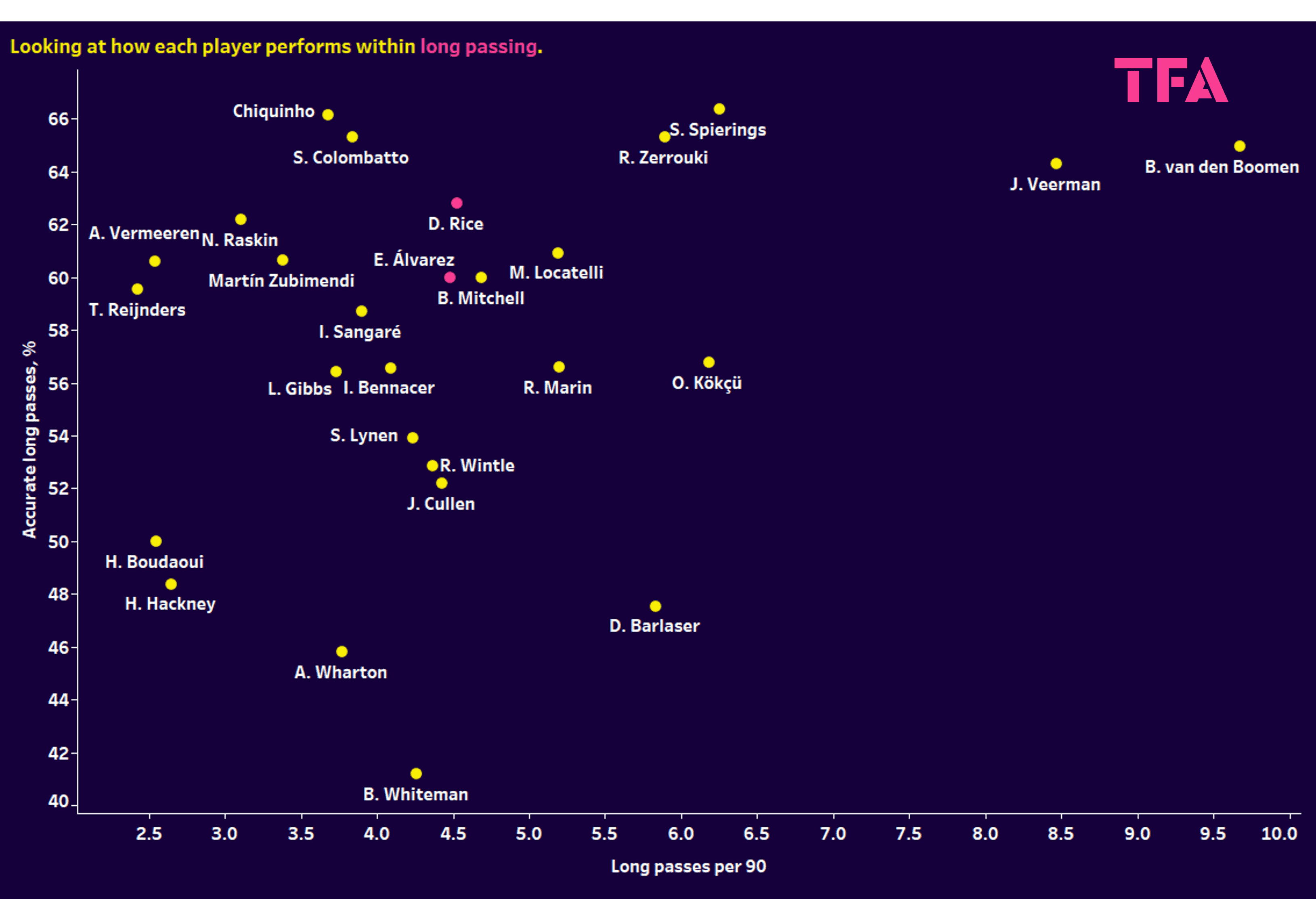
Defensive midfielders should have an excellent passing range in their locker, including picking out and executing a long pass. We won’t see West Ham do this often, as evidenced by Rice’s attempt average of 4.48 per 90, but his accuracy rate of 60% is impressive. Álvarez at Ajax last season offered a very similar output to Rice In terms of attempts and accuracy.
Several players in this group offer excellent accuracy in long passing. Chiquinho (again) offers outstanding reliability in long passing with a lower attempt average. Spierings provides the highest accuracy of the group along with the third-highest attempt average, but if you’re looking for a player who offers loads of long passes and regularly hits them successfully, then look no further than Joey Veerman (PSV) and Branco van den Broomen (Ajax), who offer that element.
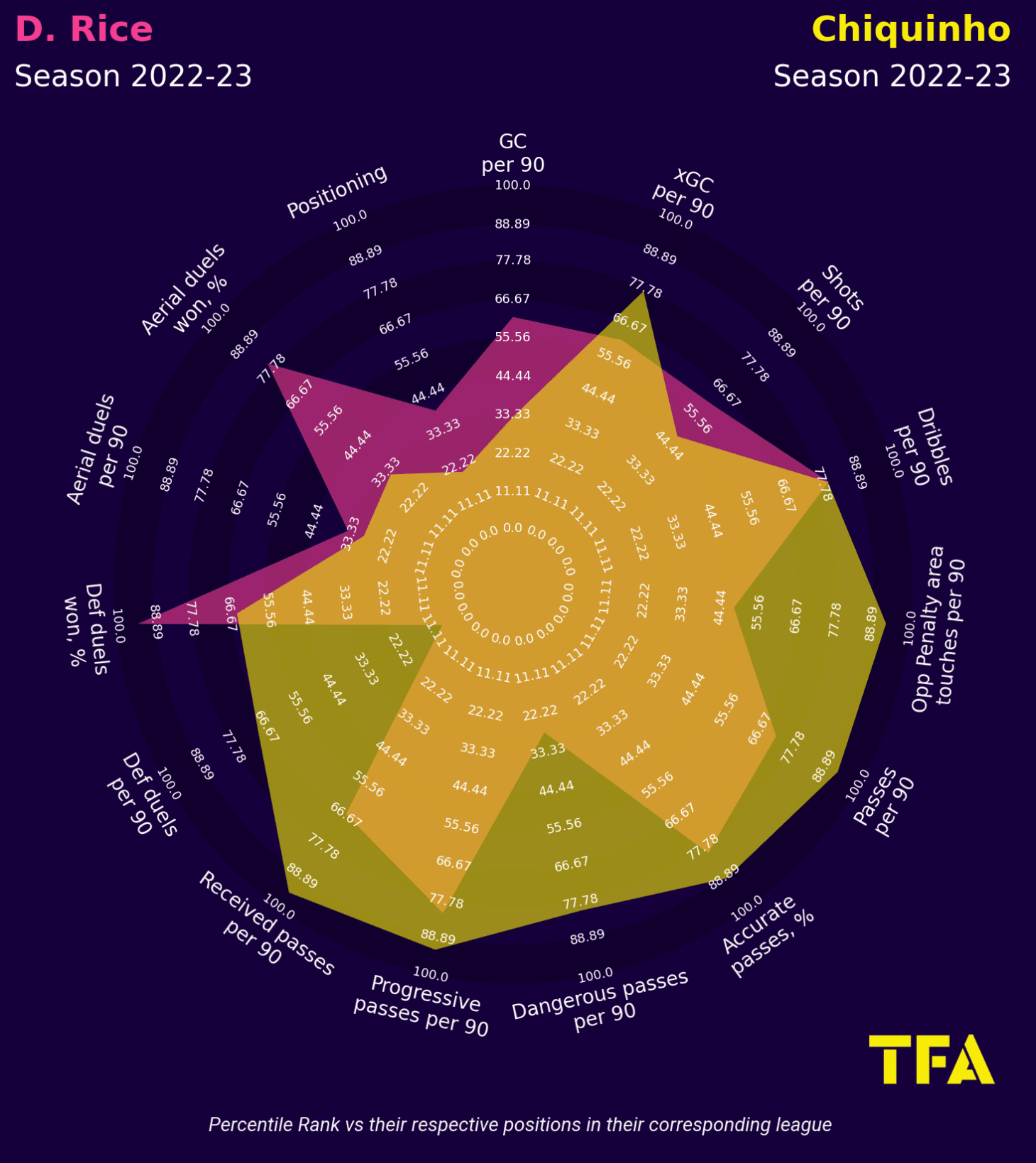
Regarding alternate solutions to Rice/ Álvarez, 28-year-old Chiquinho has demonstrated his ability as a deep midfielder. His proficiency in possession would have provided a different direction for West Ham to explore, tactically speaking, but the data speaks for itself — not only did he excel in various on-the-ball metrics, but his defensive data was also fairly impressive. He would have been a solid option for Moyes had Álvarez not been available.
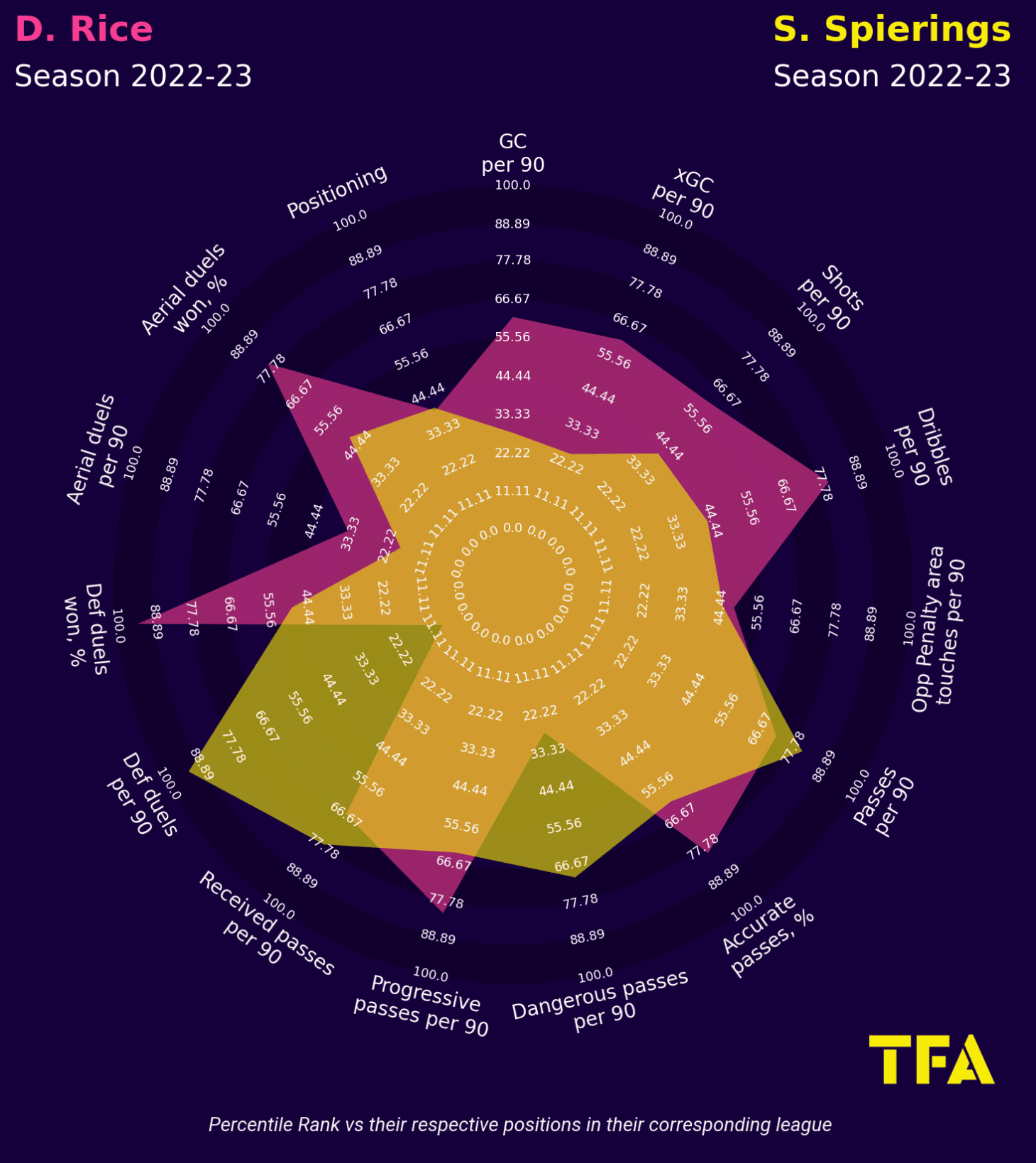
Another option whose name flies under the radar slightly is Lens midfielder Stijn Spierings. Like Chiquinho, his days as a young player are behind him, but at 27, Spierings still has plenty left in the tank. According to the data, his performances in France have been solid and consistent, offering contributions in several areas both on and off the ball.
He does many simple things right but is rarely a stand-out talent like Rice was for West Ham, and Álvarez could be, so maybe that contributes to his not being linked with a big move.
Álvarez role at West Ham — Rice comparison and fresh elements
When considering Álvarez’s attribute set as a whole, he is at least close to, if not the perfect Rice replacement, on paper. He impressed at Ajax with consistently strong performances, always offering a robust anchor-like presence to their midfield when positioned in the engine room. But, as we saw in the broader data analysis, he also provides many talents on the ball. Here, we take an in-depth look at how Álvarez compares to Rice — how he can fill Rice’s role and any new elements he can bring to midfield.
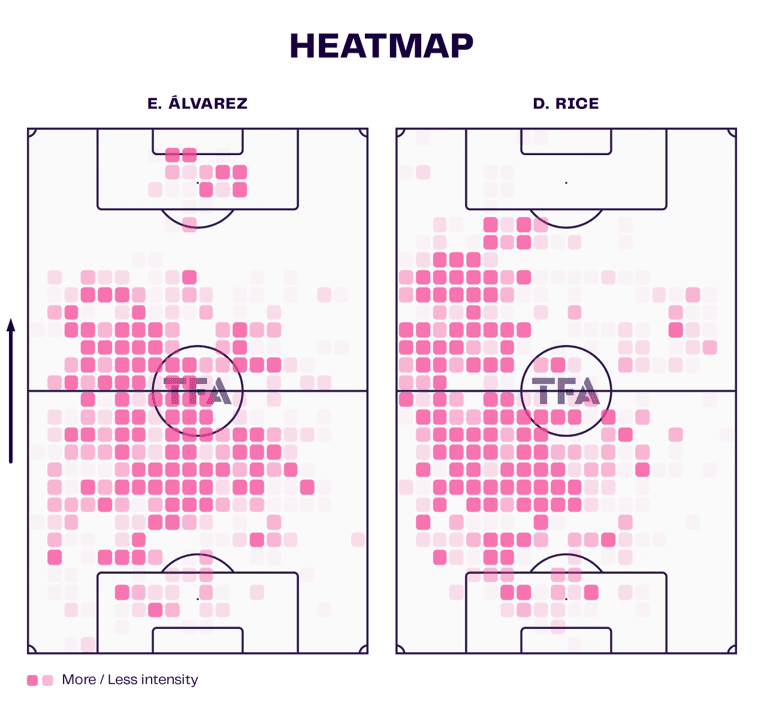
Positionally, as you’d expect, the bulk of involvement for both players is in the deeper realms of midfield. The only significant difference is that Rice’s heatmap shows he was more involved on the left side of the pitch, while Álvarez covered more area across the whole width of the pitch.
This is due to the formations used by both sides — Ajax mostly deployed a 4-3-3 with one deeper midfielder, which was often Álvarez, whereas West Ham often used a 4-2-3-1 with Rice operating as the LDM.
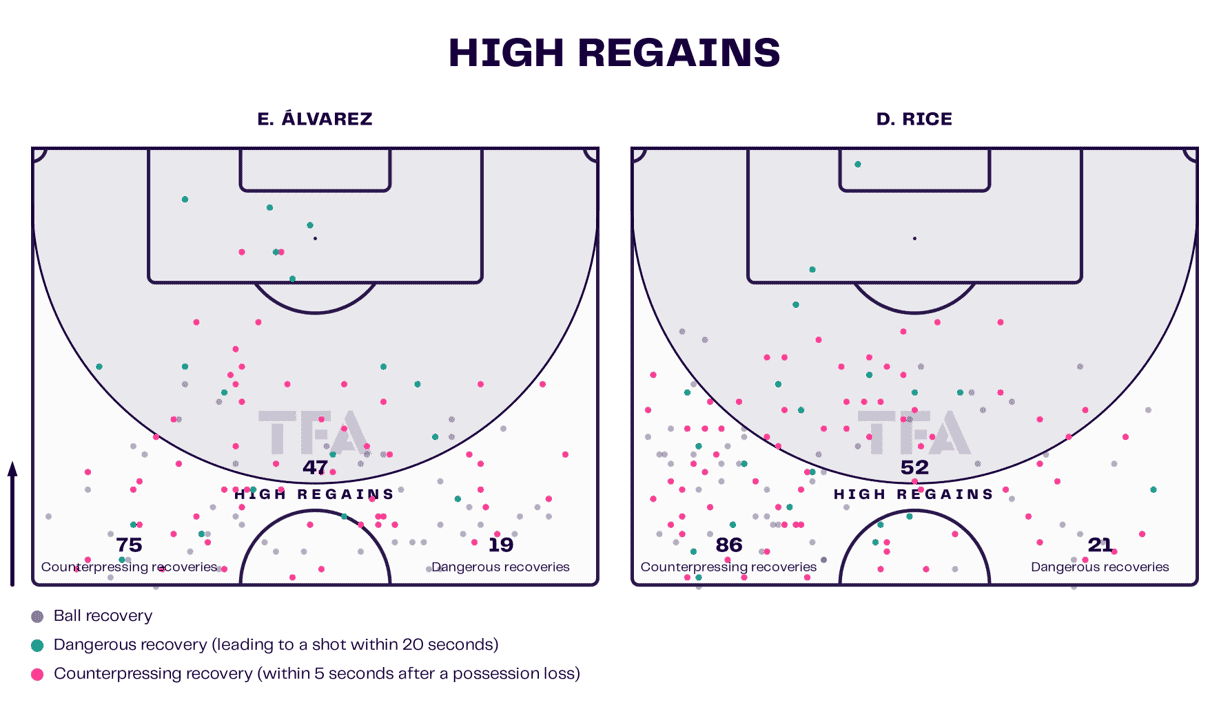
When looking at how aggressive each player is off the ball, Rice and Álvarez offer similar numbers regarding high regains. Rice has marginally more counts in high regains, counterpressing recoveries, and dangerous recoveries, but we may see Álvarez’s involvement in this area increase during his time in the Premier League. If you look closer at the location of some of Álvarez’s high regains, he is no stranger to winning the ball in and around the box.
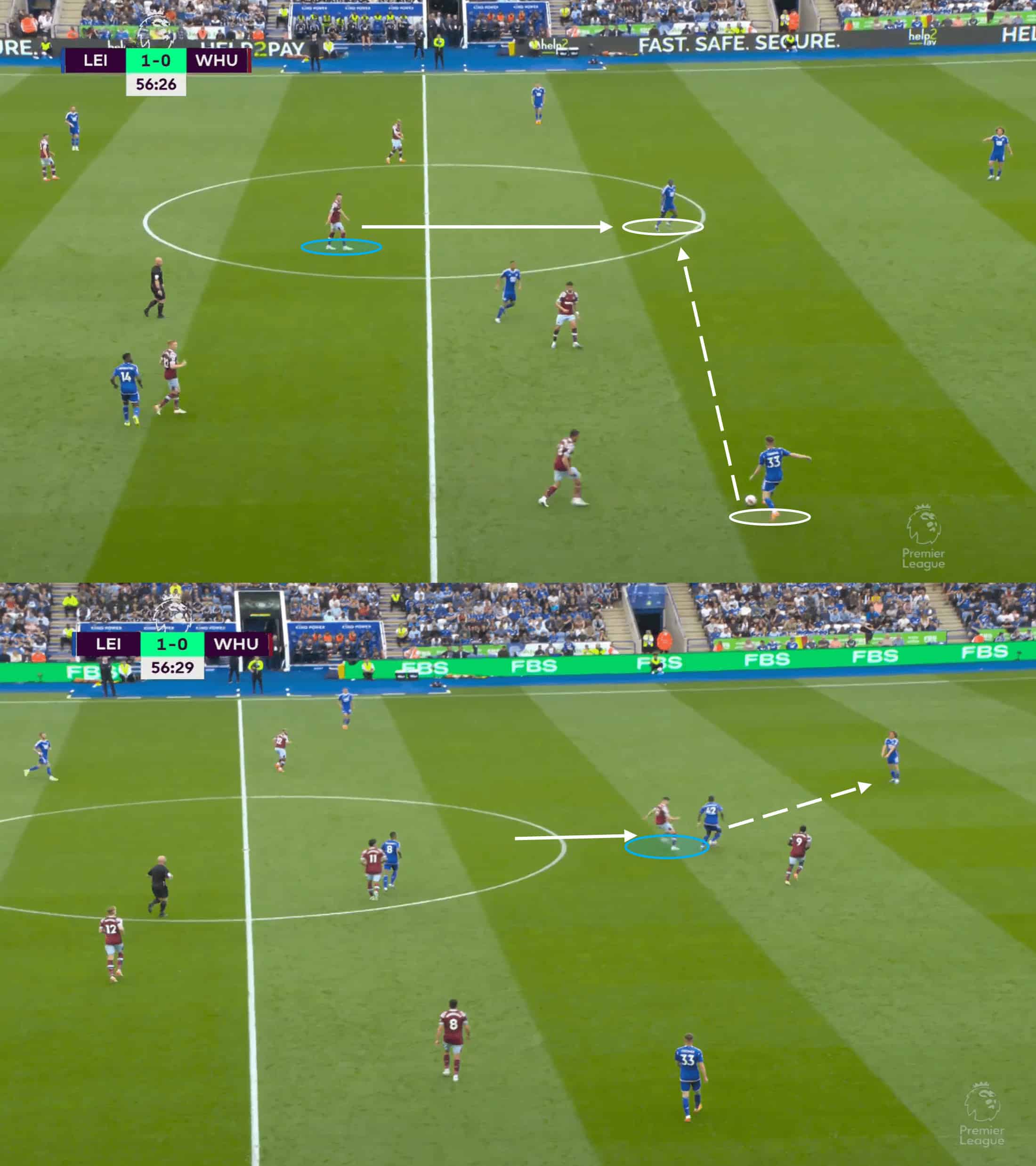
Rice being aggressive in central midfield is a staple of his off-the-ball play. His ability to recognise when, where, and who to press is excellent, and he possesses the timing and reaction speed required to act quickly enough to shut the opponent down.
The example above shows this. As the ball makes its way to Leicester’s central midfielder, Rice, already aware of what is about to unfold, shows rapid reactions to get out of midfield and press the ball, stopping Leicester from going forward and forcing them back — without this action from Rice, Leicester would have been able to get hold of the ball move forward into West Ham’s half.
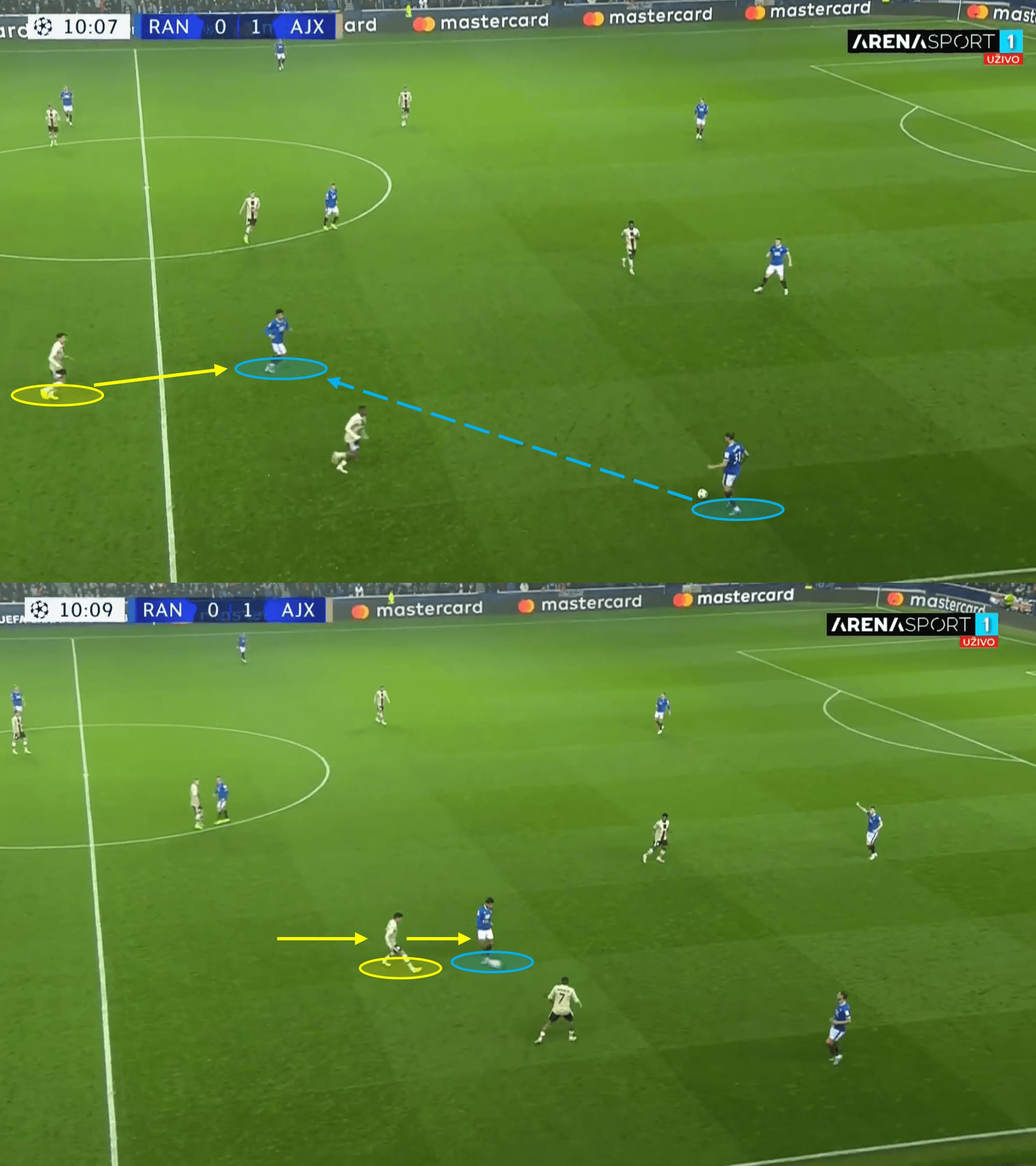
As we saw from the data visual, Álvarez seemed to offer a similar level of aggressiveness to Rice, and in some respects, he does, but in others, he comes up short. You should expect to see him coming high up when the opposition have deep possession, pressing the opposition outlet in midfield, just as you see above, looking to stop them from progressing the ball through the thirds.
However, his reaction speed to act quickly in these moments is not as sharp as Rice’s, sometimes leaving him chasing the opponent rather than pressing. It will be interesting to see how Moyes gets the best out of Álvarez in these areas, as he does possess the tools necessary to replicate Rice’s work.
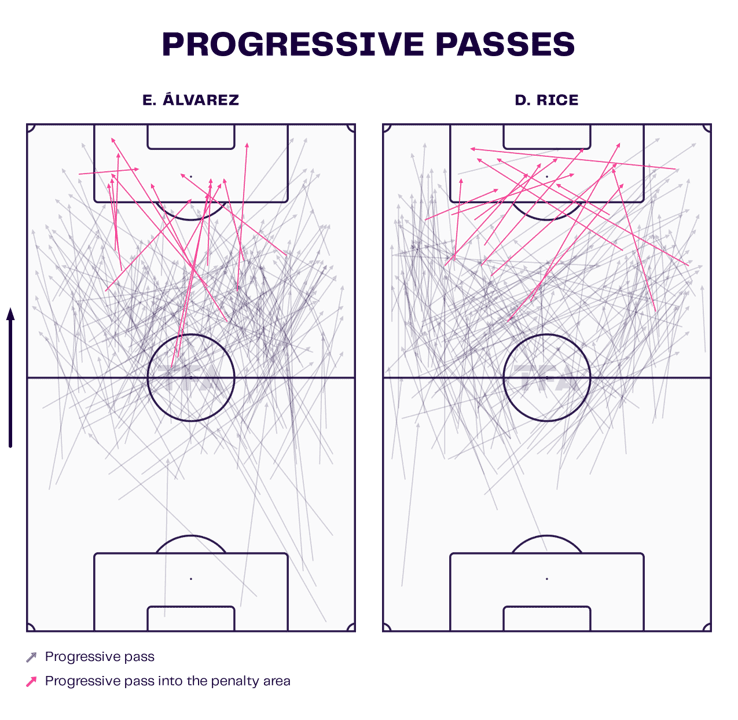
We touched on this earlier, but Álvarez has also played a fair share of games as a central defender for Ajax, showcasing his versatility. But with that role comes the reminder that he won’t get the same game situations in the Premier League as with Ajax.
By this, we mean that Ajax were often the team dominating the game and dictating the ball, forcing the opposition behind the ball — Álvarez won’t get much of that as a West Ham player, so he will have to adapt when it comes to how he releases a long pass, as many of his for Ajax came from middle zones with the opposition sat deep.
Interestingly, most of Álvarez’s progressive passes into the box came from central areas, which is a difficult skill to execute consistently, so that may be an added element to West Ham’s midfield that they didn’t have before.
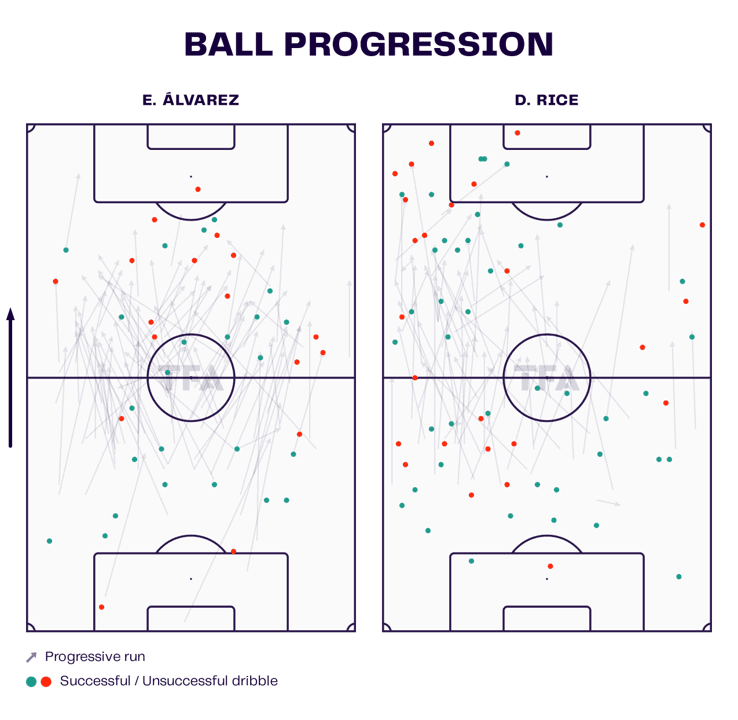
Running with the ball isn’t a primary concern for a defensive midfielder, but it is still an important factor to consider, with the severity depending on the club’s tactics. Rice’s skillset allowed him to read situations thanks to his good awareness, and for a guy of his physical size, he was deceptively quick on the ball at times. If he saw a space further up the pitch that could benefit West Ham’s build-up play, he would drive forward to try and achieve that.
According to the viz above, Álvarez didn’t execute such actions as often in an Ajax shirt — when it came to pure dribbles in the midfield, at least. Notice the difference in positioning of both players’ successful dribbles (green marks) — again, this relates to their positions last season, but also notice that Rice had more unsuccessful dribbles in West Ham’s half than Álvarez did.
It is important not to read too much into these isolated pieces of data directly, but it could give us some insight into how Álvarez might operate in a Hammers shirt — it could involve less dribbling in midfield than we saw from Rice.
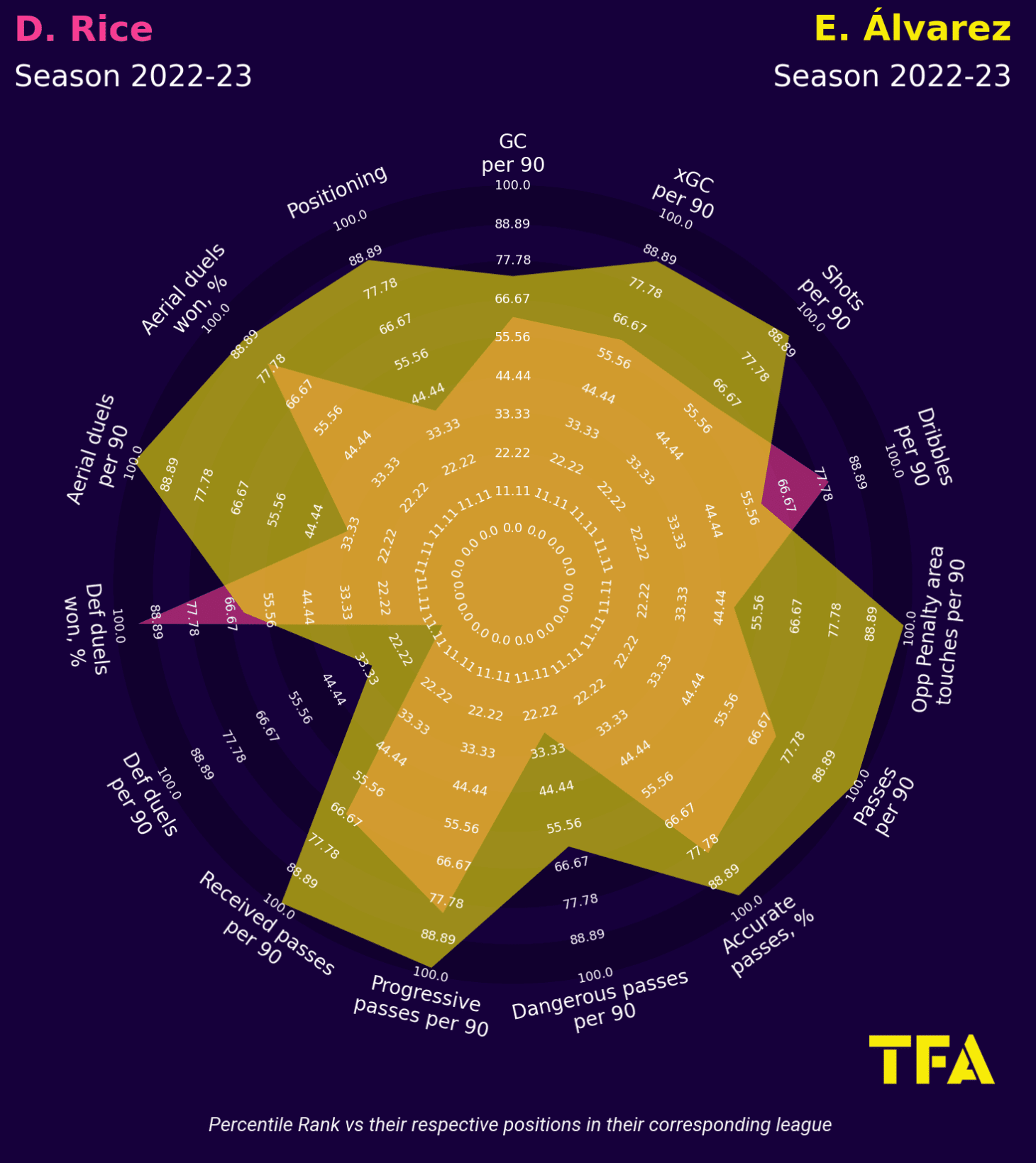
Again, with all due respect to Ajax and the Eredivisie, Álvarez will face an entirely different challenge in the Premier League — more physicality, a higher pace game, among other aspects will see a change in his data output compared to his Ajax days.
That doesn’t mean his data in the Eredivisie is any less meaningful from an analytical view. As you can see from the graph above, Álvarez excelled in the Eredivisie in several areas.
His defensive assets were a big selling point for West Ham, but the more minor details were likely just as important. His ability in an aerial duel can be vital in critical moments in the Premier League, especially if Álvarez is deployed as a CB — but his attacking input cannot be overlooked either.
From having plenty of touches in the opposition box to high involvement in early possession phases, Álvarez contributed in various ways for Ajax. Although the challenge will differ in a West Ham shirt, his data and performances from Holland prove that he has the tools required to be effective in England.
Another positive data note from the visual above is his positioning, for which he posted a high percentile ranking. This includes interceptions, an important part of Rice’s role at West Ham, so clearly, Álvarez has a good level of aggressiveness and awareness in these areas to break up opposition play — one example of those traits can be seen in the example below.
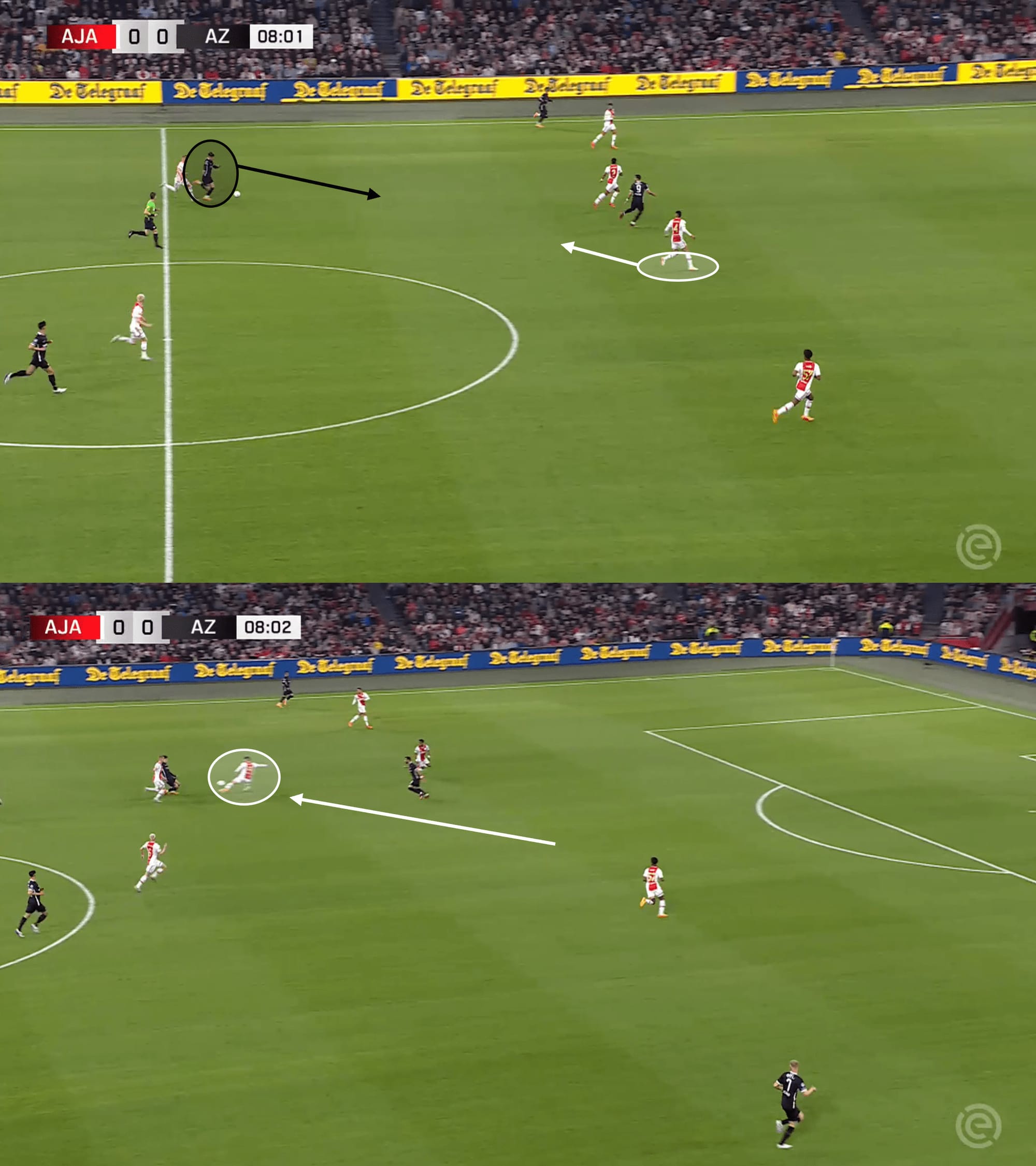
Now, this example is taken from a game where Álvarez was playing as a CB, but he displayed the aforementioned traits in terms of breaking up opposition play. Above, the opponent is driving forward into the Ajax half at an alarming pace.
Álvarez, aware of the potential danger, decides not to remain in line with his defensive unit, and instead, we see the aggressive side of his game that West Hams will love. Without hesitation, he closed the opponent down before blocking the ball from being played forward.
The reaction to do this required confidence, timing, and composure to slow down and block the player rather than maintain that level of aggression by flying into a clumsy tackle.
If Álvarez can transfer those skills into a midfield setting in the Premier League, he will be vital to West Ham’s season.
Conclusion
Edson Álvarez has been tipped with a move away from Ajax before, and this move to the Premier League is brilliant for him — a new test and a new level to adapt to, but it is likely that his versatility and leadership qualities will help him adapt quickly.
While his game differs slightly from Rice’s, he offers the same work rate, the same desire, and the same fight — time will tell if he can provide the same technical quality on a Premier League stage.




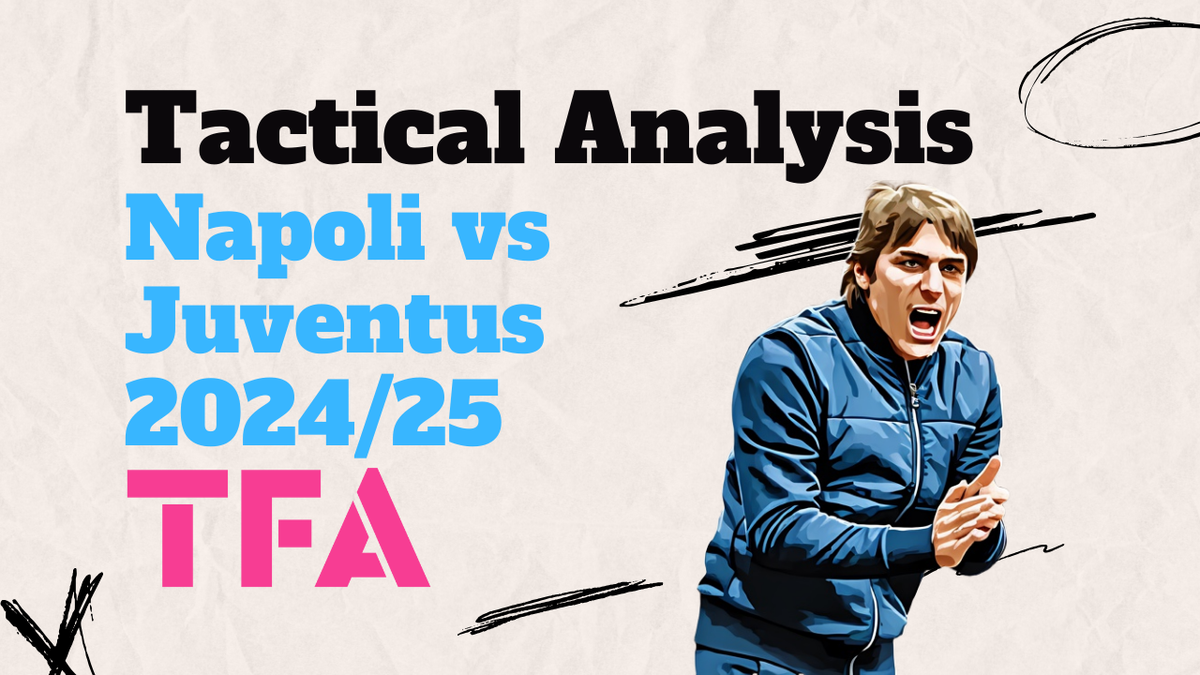
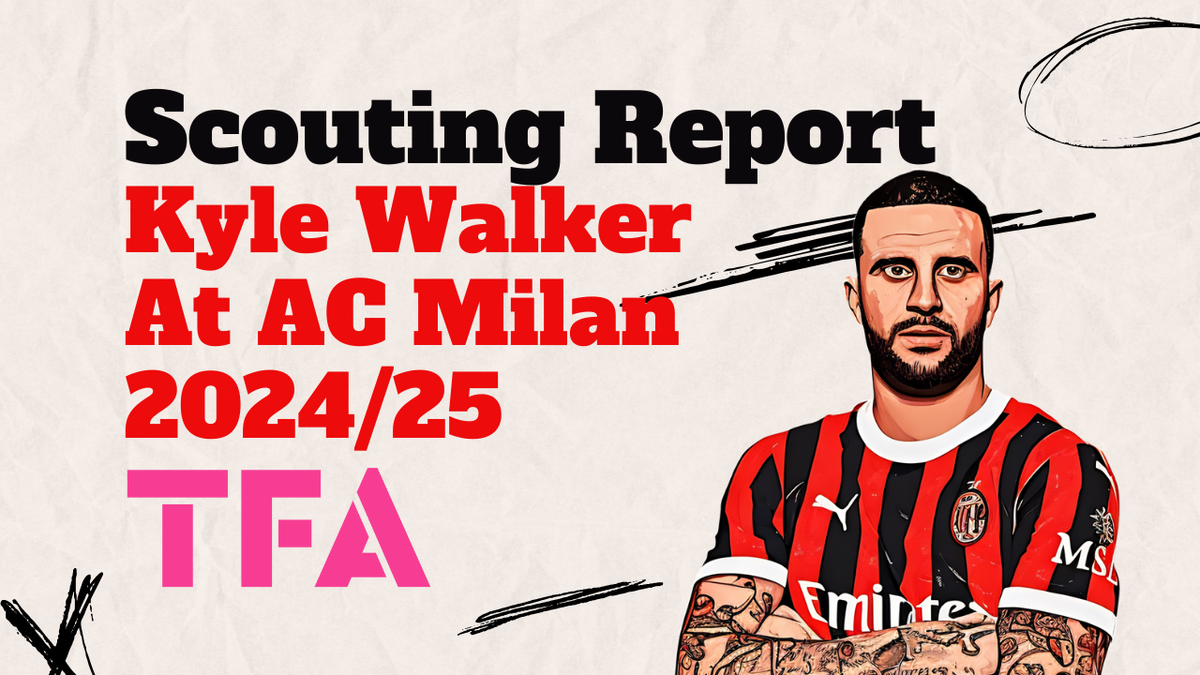
Comments